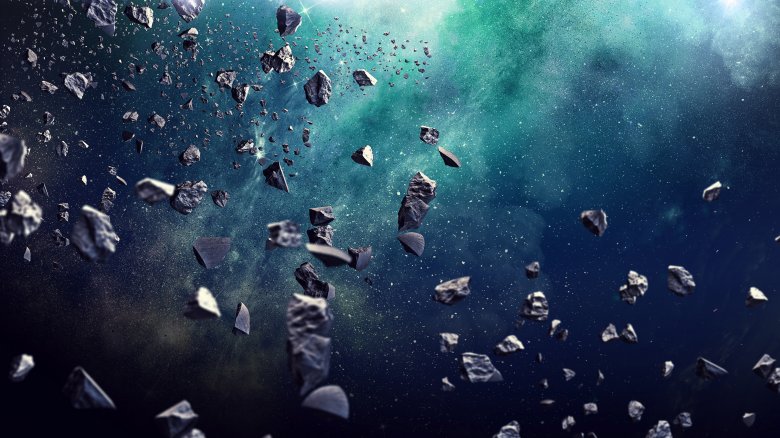How To Tell The Difference Between Asteroids And Meteors
Asteroids and meteors are both small (relatively speaking) objects that inhabit our solar system. But is "asteroid" simply a synonym for "meteor," or are they actually two different things altogether? Buckle up: we're about to take you to space-stuff-school.
According to LiveScience, an asteroid is a small, rocky object floating in space. Occasionally you'll hear people refer to asteroids as "minor planets" or "planetoids," though that label is often reserved for the largest examples, which are spherical like actual planets but top out at a diameter of about 500 miles.
Asteroids are thought to be the stuff that was left over after the solar system was formed four billion years ago, sort of like the sawdust or chunks of scrap wood that are left behind at the end of a construction project. Asteroids differ from moons because they orbit the sun rather than an individual planet. There's no atmosphere on an asteroid, but if it's large enough, it may have a gravitational pull, which means some asteroids actually have their own moons. And some of those moons may or may not have their own Moon Knights.
And there are a lot of them — the highest concentration of asteroids in our solar system is in the appropriately named asteroid belt, which you can think of as the Grand Central Station of asteroids. The asteroid belt is located between Mars and Jupiter and contains around 750,000 of the things.
A meteor, on the other hand, is an object that burns up when it enters the earth's atmosphere. So an asteroid can only be called a meteor when it gets pulled into our atmosphere and vaporizes in the sky. And all meteors aren't necessarily asteroids, either. A meteor can also be a small piece of space debris from the tail of a passing comet (typically called a "meteoroid"), or even a piece of man-made debris. Occasionally, meteors are large enough to survive the journey through the atmosphere — in that case, they're called "meteorites." And when they explode in the atmosphere and create a fireball, they're called "bolides."
So the real question is, how often do asteroids actually hit the Earth? More often than you think. According to EarthSky, over a 20 year period at least 556 small asteroids between 3 feet and 60 feet in size entered the Earth's atmosphere and became bolides. Most of them burned up before they hit the ground, with the 2013 Chelyabinsk meteor as a notable exception. The Chelyabinsk meteor was around 56 feet in diameter before it entered the atmosphere. It fragmented, and eight months after the event scientists retrieved a coffee-table sized piece of it from the lake where it crashed.
